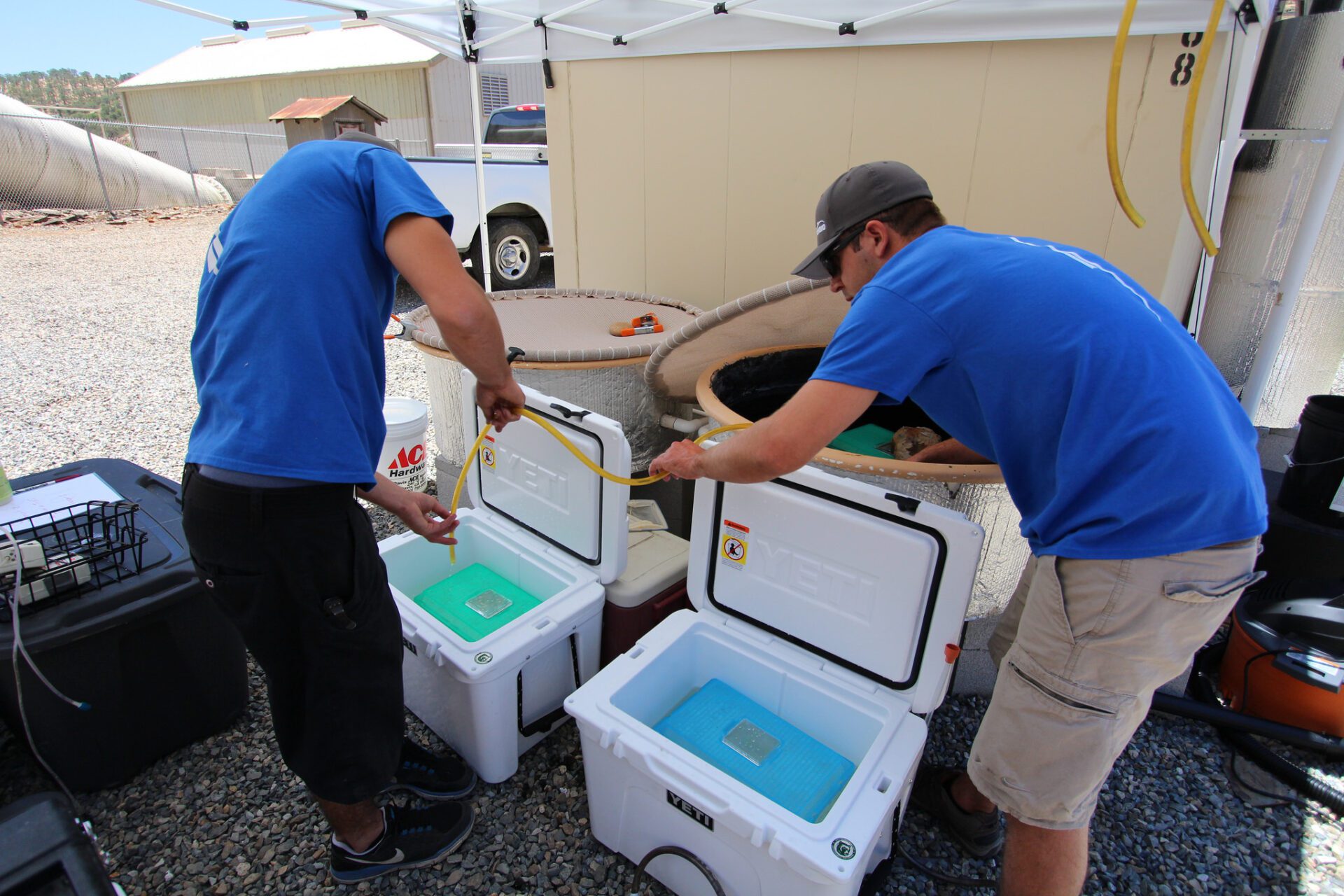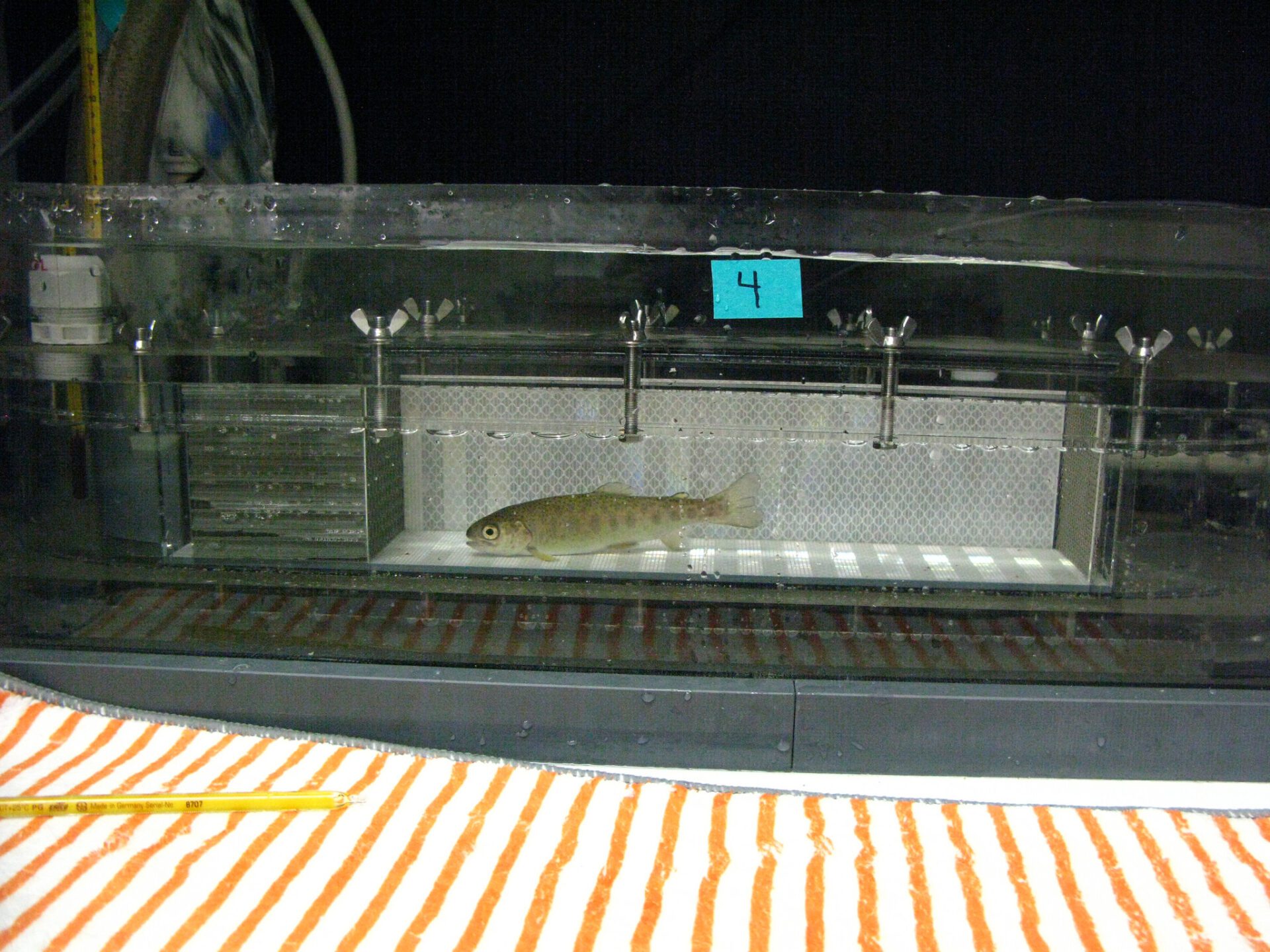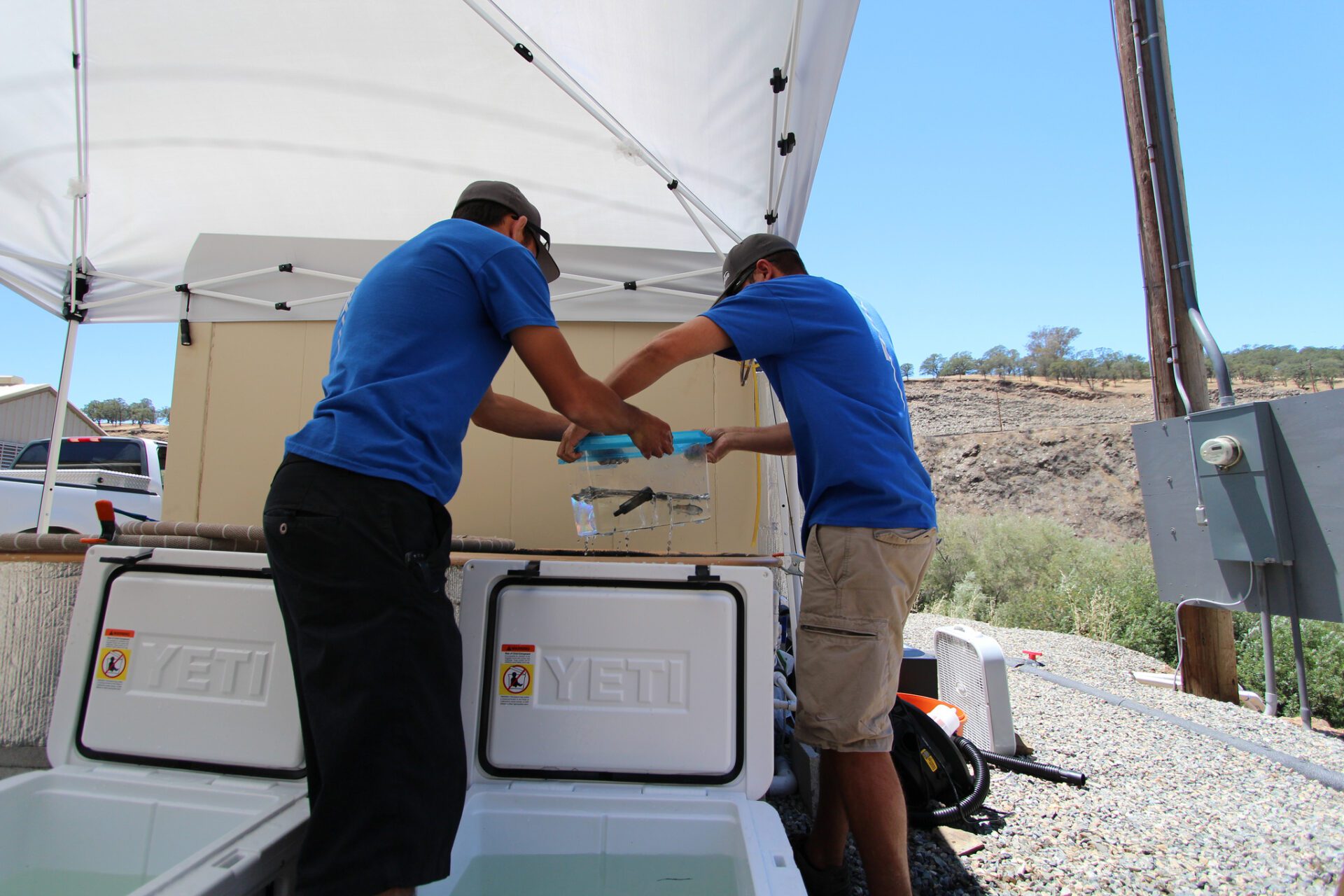Wednesday January 13, 2016
 Solving challenging problems to perform cutting edge science is one of FISHBIO’s specialties – even when one of the challenges is venomous snake encounters. Needless to say, we jumped at the opportunity to collaborate with an international team of fish biologists on a project that presented a unique challenge: to design, build, and maintain a state-of-the-art laboratory to measure the swimming and metabolism of protected wild Oncorhynchus mykiss on the banks of their native river.
Solving challenging problems to perform cutting edge science is one of FISHBIO’s specialties – even when one of the challenges is venomous snake encounters. Needless to say, we jumped at the opportunity to collaborate with an international team of fish biologists on a project that presented a unique challenge: to design, build, and maintain a state-of-the-art laboratory to measure the swimming and metabolism of protected wild Oncorhynchus mykiss on the banks of their native river.
While we’re no strangers to setting up outdoor stations for everything from external fish marking to surgeries for inserting acoustic tags, this project involved constructing a state-of-the-art laboratory facility in a remote streamside location. The goal of the study was to measure the resting and swimming energy requirements, or metabolism, of rainbow trout at different temperatures. To do this, we transformed a portable storage unit into a wet laboratory with water that can be warmed to specific temperatures. The laboratory was outfitted with high-tech swim tunnel respirometers, which are underwater treadmills for fish, that use a motor to control the water flow, and therefore the fish’s swimming speed. Swim tunnel respirometers also contain special oxygen monitoring equipment to measure the metabolic rate of fish in the swim tunnel. These measurements tell us how warm water affects the fish, and at which temperatures fish perform well. You can imagine how important it is to keep fish stress free, and in conditions similar to their river habitat, when performing these measurements.
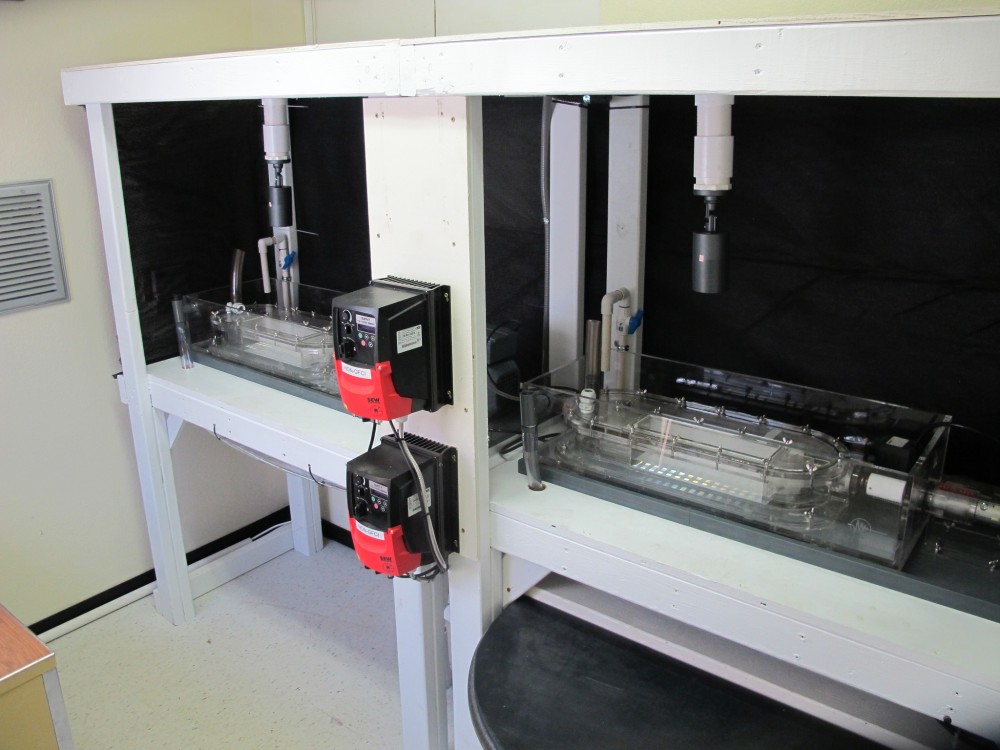 Usually, such experiments take place in laboratories far from the fish’s native river, and experimental fish are often held under artificial conditions for weeks or even months before experimentation. It is a rare privilege for scientists to get permission to temporarily remove threatened O. mykiss from California rivers, so we decided it was essential to bring the laboratory right to the wild fish, rather than the other way around. This streamside location meant fish were often transported into the laboratory just steps from where they were caught, and could be kept in water from the river at all times. In fact, all measurements were performed and the fish were returned to the river within 24 hours of being captured. By minimizing the stress the fish experienced, our measurements in the laboratory were the closest possible approximation to fish in the wild. Reducing any negative effects on the fish also allowed them to quickly recover when they were released back into the river.
Usually, such experiments take place in laboratories far from the fish’s native river, and experimental fish are often held under artificial conditions for weeks or even months before experimentation. It is a rare privilege for scientists to get permission to temporarily remove threatened O. mykiss from California rivers, so we decided it was essential to bring the laboratory right to the wild fish, rather than the other way around. This streamside location meant fish were often transported into the laboratory just steps from where they were caught, and could be kept in water from the river at all times. In fact, all measurements were performed and the fish were returned to the river within 24 hours of being captured. By minimizing the stress the fish experienced, our measurements in the laboratory were the closest possible approximation to fish in the wild. Reducing any negative effects on the fish also allowed them to quickly recover when they were released back into the river.
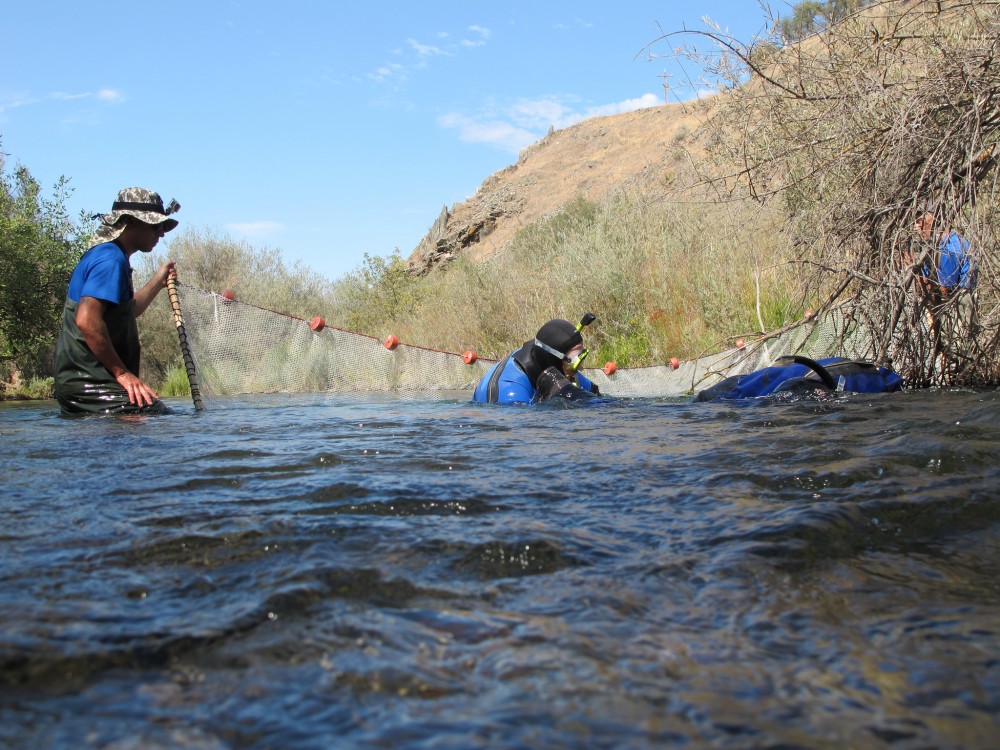 Despite the benefits this streamside laboratory provided for the fish, its remote location presented some tough challenges, and even a bit of danger, for our staff. After lots of research to find a location with a reliable power supply for the sensitive scientific equipment, we were fortunate to gain access to a site next to a hydropower dam’s pump house. Unfortunately, this site was also an active rattlesnake pit! However, our skilled crews were able to construct the laboratory from scratch, complete with water and electrical supplies, in record time to make sure we could flawlessly run experiments 24 hours a day for the 12-week summer field season – all without one rattlesnake bite!
Despite the benefits this streamside laboratory provided for the fish, its remote location presented some tough challenges, and even a bit of danger, for our staff. After lots of research to find a location with a reliable power supply for the sensitive scientific equipment, we were fortunate to gain access to a site next to a hydropower dam’s pump house. Unfortunately, this site was also an active rattlesnake pit! However, our skilled crews were able to construct the laboratory from scratch, complete with water and electrical supplies, in record time to make sure we could flawlessly run experiments 24 hours a day for the 12-week summer field season – all without one rattlesnake bite!

